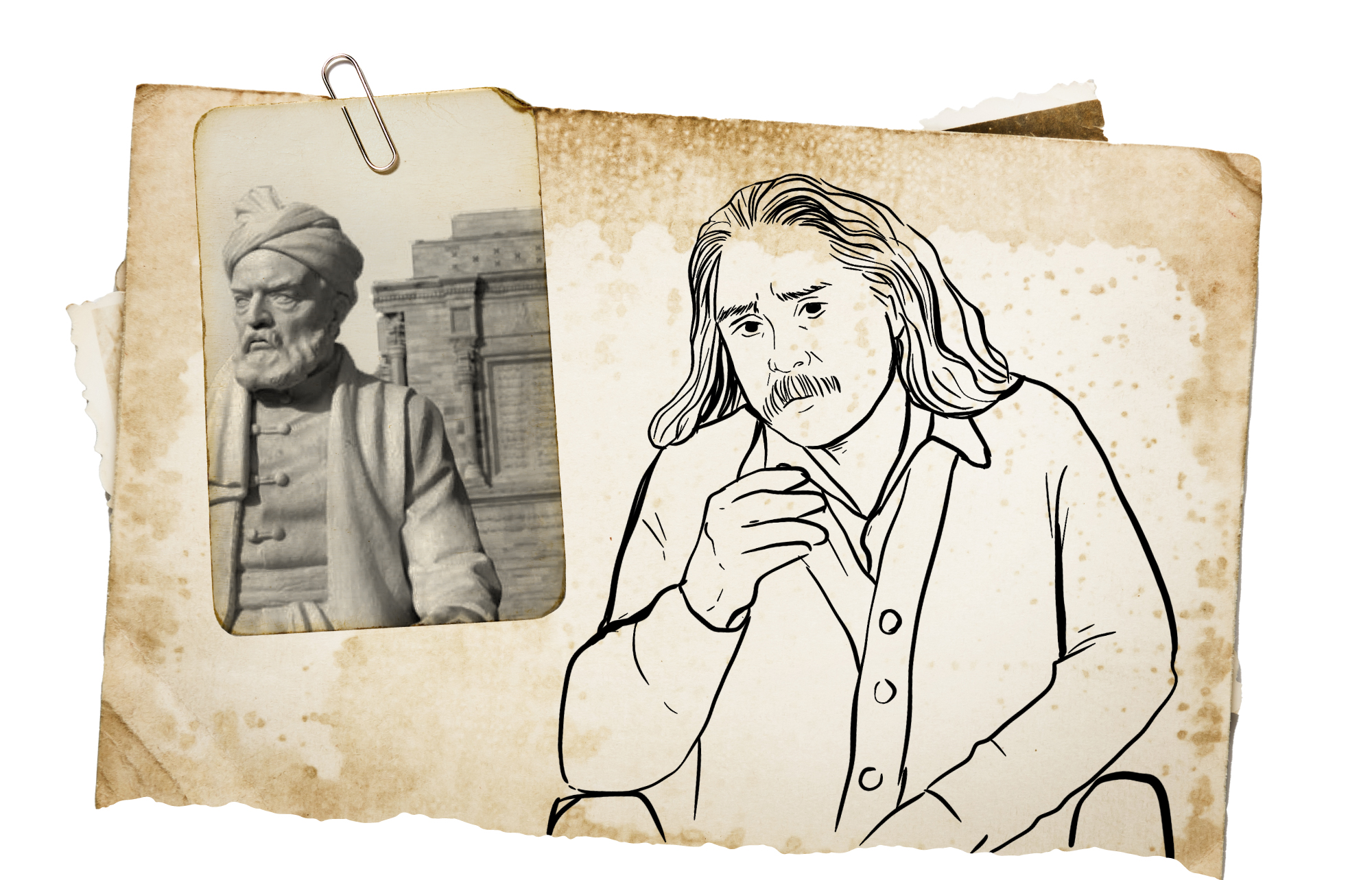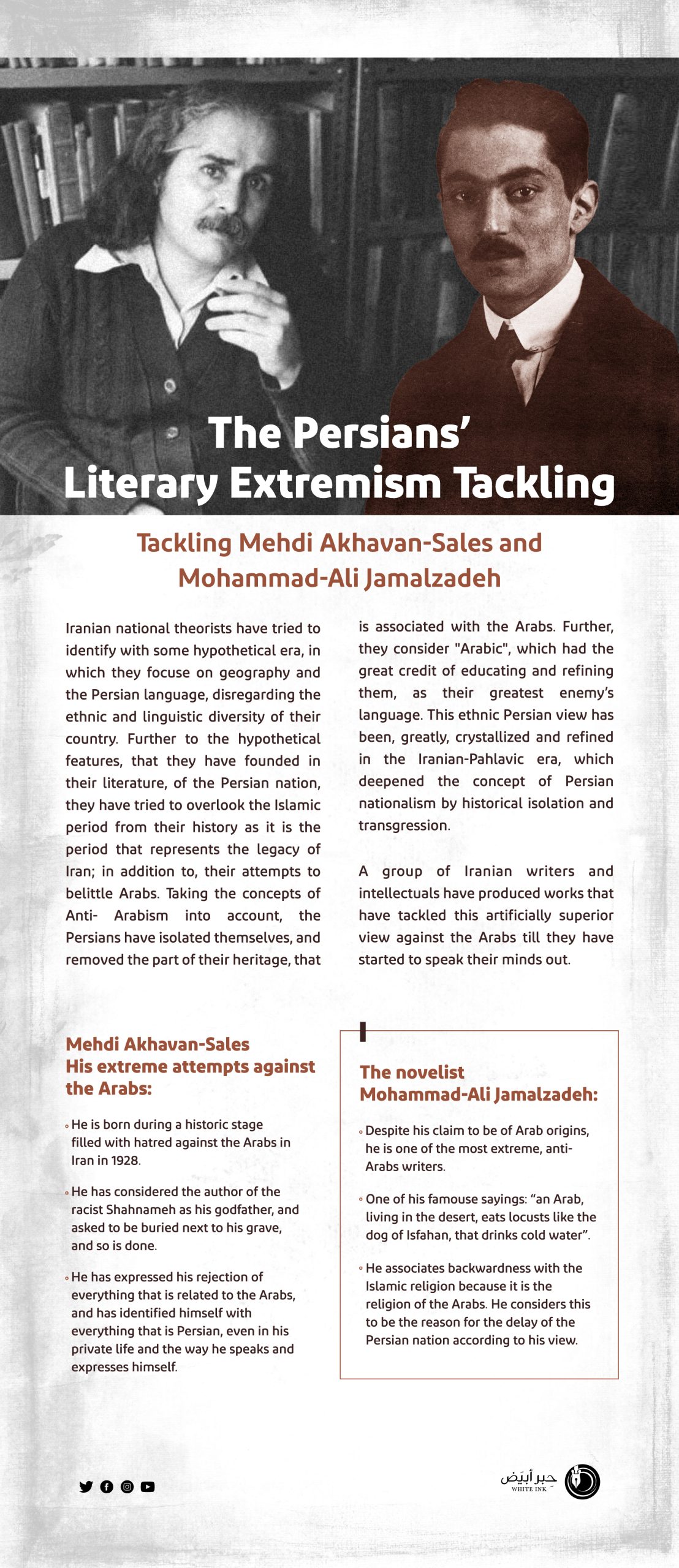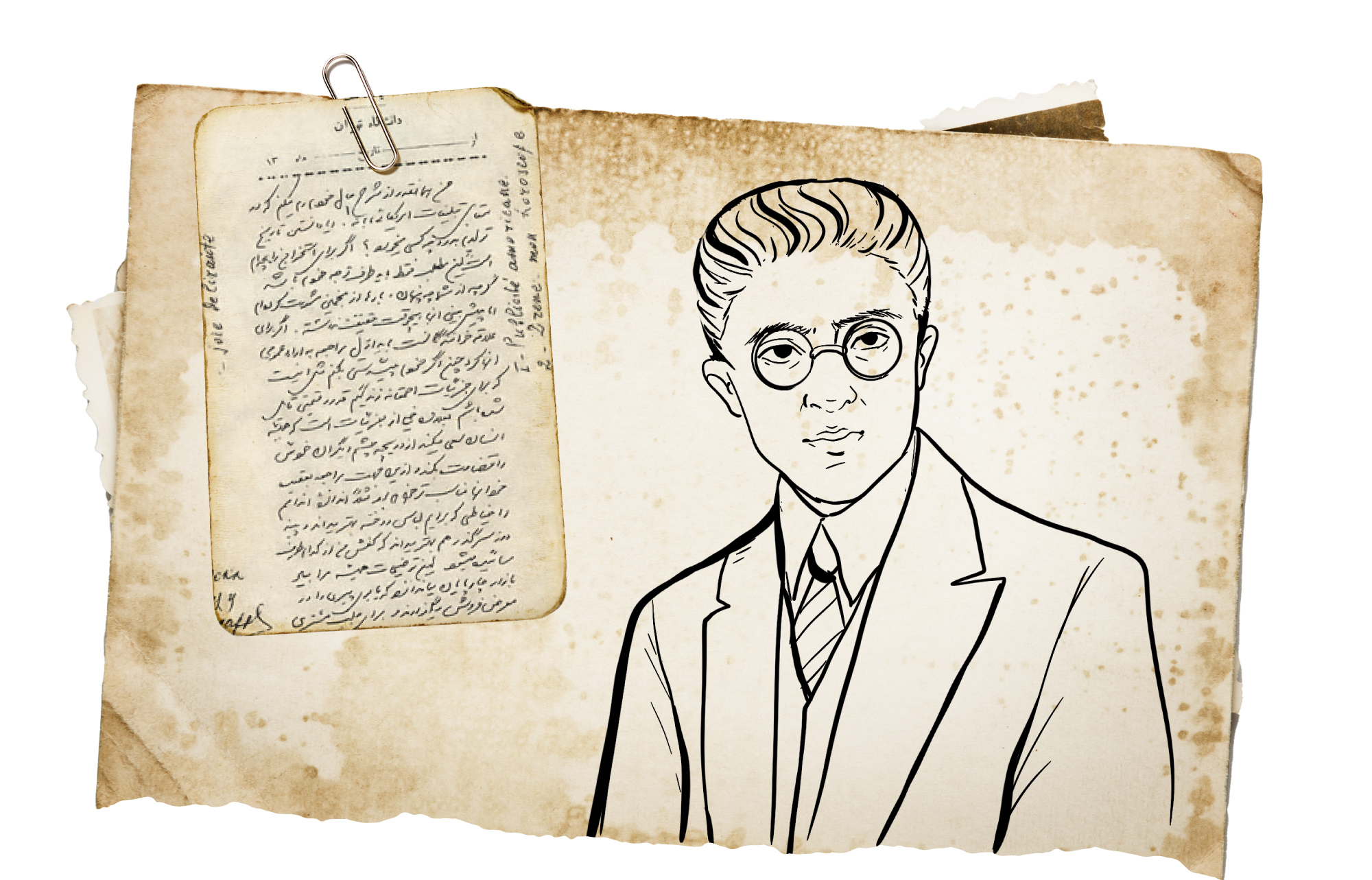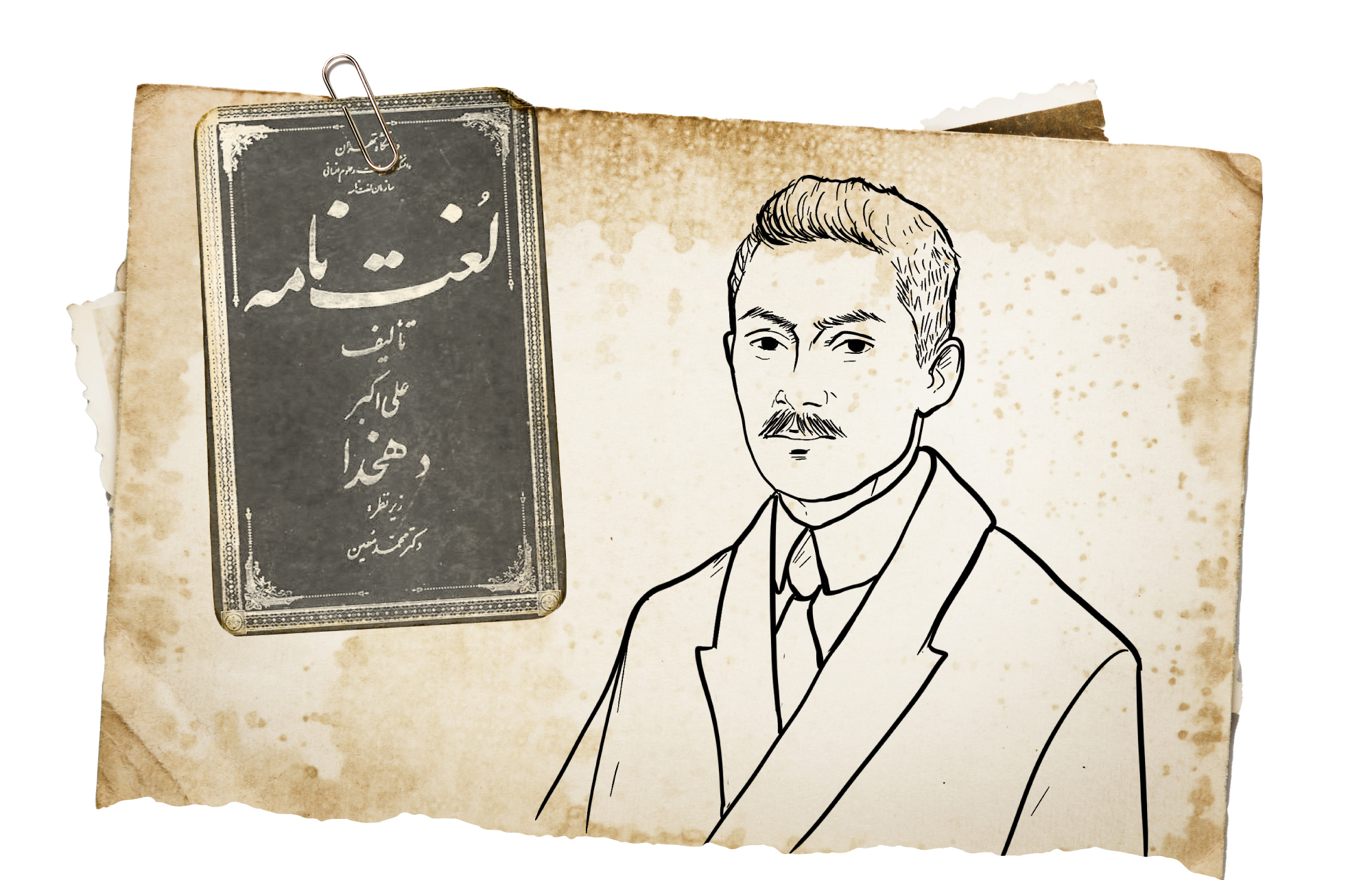
From the rule of the Shah to the Mullahs
Mehdi Akhavan Sales deepened the language of Persian enmity against the Arabs
Some attribute the roots of the current of radical Iranian nationalism to the populist movement, which was largely spread throughout Islamic Persia. This movement rejected the Arab Islamic rule and tried to revive the ancient Persian history, as it distorted the image of the Arab in general. One of the most important figures of this movement is the great Persian poet Al-Ferdowsi, who composed “The Shahnameh”.
As for the real emergence of radical Iranian nationalism, it was linked to the changes of the modern era, especially with the establishment of the Safavid state in Iran. Researchers agreed that the modern state in Iran faced a major problem, which was the plurality of ethnicities as well as religions and sects. If the Persian component represents the majority in Iran, there are many other minorities such as Arabs, Turkmen, Kurds and others. Despite the wide spread of the Persian language throughout Iran, this does not hide the clear fact that confirms the plurality of languages in Iran.
Based on that point, the theorists of radical Iranian nationalism at the beginning of the modern era attempted to change the idea of ethnic and linguistic plurality in Iran by composing a common history for the country and one common language for all of Iran. Accordingly, they defined Iran as a unique nation through the factors of history and language. As for history, they ignored the Islamic era of Iran, returned to the ancient Persian history and revived it as representing the bright time of Iran. The Persian language was imposed as a national language and a common factor among the entire population of Iran.
Radical Iranian nationalism was based in its formation on the concept of its identity and the other, so it searched for “The other” in order to take it as its enemy. Unfortunately, Iranian nationalism made the “Arab” its enemy. Scholars of literature and culture in Iran refer to the policies of the Reza Shah Pahlavi regime at the beginning of the twentieth century, as the regime worked to venerate the history of Iran before Islam and accuse the Muslim Arabs of being the reason behind the loss of the ancient Persian glory. The regime of Reza Shah also adopted the reform and renewal of the Persian language based on the desire of the Persian nationalist current to purify the Persian language from many Arabic vocabulary and replace it with old Persian vocabulary.
In this atmosphere of extreme Persian nationalism, the Iranian poet, Mehdi Akhavan Sales, was born in 1928. Mehdi Akhavan began his education in Mashhad and later turned to poetry and was influenced by the Persian poet Al-Ferdowsi, the author of The Shahnameh, which talks about the glories of the ancient Persians and opposes the rule of the Muslim Arabs. We can notice the extreme nationalist dimension of Mehdi Akhavan and his rejection of Islam and the Arabs from the way he chose the names of his sons, as he chose the name of Zoroaster for one of them, just as he chose the name of Mazdak for another son.
The previous example illustrates the Attitude of Mehdi Akhavan towards the Arab Islamic history of Iran and his extreme nationalism towards the ancient Persian history. It also shows us that he was greatly influenced by the poet Al-Ferdowsi, as he recommended that he be buried near Al-Ferdowsi’s tomb in Mashhad, and indeed he was buried there in 1990.
In 1990, Mehdi Akhavan was buried next to the tomb of Al-Ferdowsi, the author of The Shahnameh, for their union in hatred of the Arabs.

We can deduce the view of the extremist Iranian nationalist current, represented by Mehdi Akhavan Sales towards the Arabs, from what he wrote in this regard, when he said:
“The Arabs corrupted every aspect of Iranian life starting from religion and folk myth to language, literature and history. The ominous Arab traditions and the awful Arabization spoiled our traditional poetry, not only in terms of form, rhyme and structural system, but also in most of the poetic works. Our Persian national language has been dominated by the Arab Semitic and Islamic superstitions, but the Iranian race does not die. We were the ones who were subjected to the invasions of the Greeks and Parthians for many years, but we withstood with pride. Their language, morals, and customs (that is, the Arabs) do not suit us because they are barefoot, naked and savage Arabs who have nothing but a long tongue and a sword”.
This is the view of Mehdi Akhavan Sales and the extremist nationalist Iranian current towards the Arabs and Islam. In fact, we cannot explain Mehdi’s attitude except through the rejection of this current to the Arab-Islamic civilization since the populist movement. This is the current that awakened sharply at the beginning of the twentieth century with the illusions of the Reza Pahlavi regime in restoring the glory of the Persian Empire and creating the other or the Arab enemy. This current was formed after that, with the tendency of hatred and hostility towards the Arabs in a new form in the Achaemenid policy that controls Iran today.


- Ismail Azar, The National Identity components in the Poetry of Mehdi Akhavan Sales, Tunisian Academy of Sciences, Letters and Arts (2012).
- Joya Saad, The Image of the Arabs in Modern Persian Literature (Damascus: Cadmus for Publishing and Distribution, 2007).
- Aref Al-Zgoul, Political and Social Discourse in the Poetry of Mehdi Akhavan Sales, Jerash for Research and Studies, Volume 13, Issue. 2 (2009).
- Ali Obeidat, Translation of “The Winter” Poem by the Iranian Mehdi Akhavan Sales, Al-Hiwar Al-Motamaden (2014).
- Nabil Al-Atoum, The Image of Arabs in Iranian School Books (Amman: Umayya Center and Dar Ammar, 2015).


In an elemental accumulation that established a general behavioral structure for the Persians
The Arabs and Islam are the most prominent psychological complexes of Sadeq Hedayat in his writings
The Persian hatred towards everything that is Arab cannot be linked to the political considerations only, given that the hatred with which the Persians were saturated made this behavior part of a racist doctrine that had accumulated for centuries and then it contributed to the extremism of the “ego” of the Persians and formed a deep gap that is difficult to treat.
The Persian hatred was not limited to politicians, but extended to some opponents of politicians in Iran, which proves that the racial accumulations have turned into a part of the main behavioral and personal structure of the Persian race, which seems to have found in the thesis of the Aryan people the fulfillment of a deep feeling thirsting for that sense of importance and exclusion.
Among these writers who combined their hatred of the Persian regime and their hatred of the Arabs was the writer Sadeq Hedayat, who lived a short life that everyone agreed on its misery and its bad ending. It ended with his suicide in his home with a gas pipe leaving a letter and a sum of one thousand French francs to those who would discover his body. He wrote in his letter: “It must be given to the parents as a little compensation for the pain I might have caused them”.
Hedayat is best known for his study of the history of Iran in the pre-Islamic period and was conversant with the Middle Persian language, and the Arabs and Islam remained a central problem in his writings. Although Sadeq Hedayat’s books were not spread during his life among the Persian readers, they spread widely after his death, especially the books in which he dealt with the life of Omar Khayyam and his Rubaiyat in addition to the novel of “The Blind Owl”.
Hedayat contributed to the formation of a contemporary Iranian intellectual, literary and political discourse that despised the Arab element, exalted the Persian element, and yearned for the history of Iran before Islam. Hedayat, along with a group of contemporary Persian writers, has contributed to erasing the national identity of the ethnic groups that make up more than 60% of Iran’s population, especially Azeri-Turkish nationalism, to which the Supreme Leader of the Iranian Revolution, Ali Khamenei, belongs.
Sadeq Hedayat not only portrayed a racist image against the Arabs, but also claimed that Omar Khayyam shared the same view with him, which is the claim he referred to in his introduction to the Rubaiyat, as he says: “Through his angry laughs and allusions to Iran’s past, it is clear that he hated these Arab thugs and deeply despised their vulgar ideas”.
Hedayat was obsessed with hatred of the Arabs even when he was seriously considering suicide. He said: “If I die, they will take me to the mosque of Paris and hand my body over to the Arabs who do not worship any God, so I will die twice! I can’t stand seeing them”. In one of his stories, Hedayat continues to target the Arabs in a prejudiced language that is dominated by subjectivity. He says: “The Arabs, especially those who run barefoot behind lizards, have no artistic thought in their heads and what is known as their art actually belongs to other peoples. Arab architecture is an absurd imitation of Iranian architecture”.
Hedayat excelled in trying to degrade the Arabs and present them as an unproductive race that does not know how to live and has no luck in development, art, culture or science. Since Hedayat’s thought and personality do not recognize the religious dimension, he ignored the fact that Allah chose the Arabs to deliver the message of Islam and revealed to them an Arabic book by which a billion and a half Muslims worship. What is confirmed by reading the writings of Hedayat is that he hated Islam as a whole.
The least that can be said about Hedayat’s descriptions is that they are prejudiced, like the general feeling of the Persians towards the Arabs, which is what made him describe the Arab as “Barefoot, with a black face, blazing eyes, and a light beard. Arabs dressed in long, loose clothes with stupid faces under fezzes and sly expressions under turbans. There were Arab women with filthy tattooed faces, blazing eyes, and rings piercing their nostrils”.
In the end, Hedayat was the product of a racist, arrogant Persian behavioral structure directed against the Arabs. Hence, we can identify one of the factors of the Persian-Arab conflict that still drives the political decision system in Iran.


- Ibrahim Al-Aris, Omar Khayyam and his poems, by Sadeq Hedayat: The first Iranian study about the author of the Rubaiyat, an article published on hafryat website at: https://hafryat.com.
- Jihad Fadel, The Arabs from the Persian point of view, an article on the website of Al-Riyadh newspaper, Saudi Arabia, Issue. 15665, May 15 (2011).
- Joya Saad, The Image of the Arabs in Modern Persian Literature (Damascus: Cadmus for Publishing and Distribution, 2007).
- Sadeq Hedayat, Isfahan is Half of The World, translated by: Ahmed Haidari (Cairo: Masarat for Publishing and Distribution, 2015).
- Youssef Azizi, Sadeq Hedayat, the father of the Persian novel and the spreader of hatred against the Arabs, an article published on The Arab website at: https://alarab.co.uk.

Through Literature, Authorship and Politics
“Arabs” Faced incitement of Hatred by Persians
The American researcher specialized in the Iranian studies, Joya Blondel, diagnosed the Iranian situation and Persian nationalism since the nineteenth century AD until the current era. She has discussed the literature role with regard to depicting the self- image, especially in Iran, where there were many races and ethnicities. She has also illustrated the reasons forming the emergence of the chauvinistic nationalism among the Persians.
Joya affirmed that the Persian attempt to underestimate Arabs is ancient in the Persian literature, as it overfilled the Persian books that tried to deform the Arab man, and show him as uncivilized person, in contrast to the thriving, civilized Iranian. When the Pahlavi regime came in the twentieth century, it sought to integrate all national minorities in the Persian Iran- including Arabs- as it focused on politics and economics in Tehran, endeavoring to destroy the economic basis of other non- Persian nationalities. Such cases of complaint and objection were confronted by instilling the national Persian slogans and intellectual propaganda to restore the glories of the ancient Persian empire that was before Islam; considering Arabs and Islam as the two reasons of the Iranian backwardness; obliterating the ancient Persian civilization that lasted for thousands of years; blaming the new religion for such backwardness; deeming the Arab believers and disseminators of this religion as the real disaster that befell the Iranian culture due to the backwardness of the dominant civilizational model, especially that the role of the Arab man was characterized as a barbaric lizard- eater barefoot man, who did not know civilization. Therefore, his first step was destructing the ancient Persian civilization, given that Iran belongs to an Aryan race and an Indo- European language, in contrast to the backward Semitic Arab by all anthropological accounts, as Persians tried to portray.
The cultural nationalism is a persistent theme in modern Persian literature, which denotes loyalty and devotion to the nation and Persian nationalism, which has found in its pre- Islamic heritage a source and glorification of the Zoroastrian religion and the ingenuity of the Aryan race. In addition, it reviled the Arab Muslims because they caused the decline of the great Iran. Thus, the Persian language became a central matter of the ideology of the Pahlavi ruling regime that sought, in turn, to entrench the ethnic identity of the non- Persian peoples in Iran, making them part of the Iranian nation by making the Persian language the official language of the country, media, education, and literature. An academy specialized in Persian literature was established. It issued lists of new Persian words, after reformulating them with the purpose of removing foreign words, especially vocabulary of Arabic origin.
We will mention here some examples of the Persian racism against Arabs and Arab language. In a book titled Dehkhoda “Lughat Nama”, Arabs are described in details using the terms of race, in addition, they are described as a Semitic people who are a group of people different from the non- Arabs.. They are the inhabitants of the Arabian Peninsula, the Levant, Sudan and North Africa. He described them saying, “They are a people that seeks pride from their past and their race, like all backward peoples.” The novelist, Mohammad Ali Jamal- zadeh, who claims to be affiliated to Al al- Bayt described the common saying without commenting. “In the desert , the Arab man eats locusts like a dog drinking ice water in Isfahan”, such saying showed the extent of the popularity of Mohammad Ali Jamal, who viewed Islam as an integral part of the Iranian culture. Nevertheless, he did not consider himself as an Arab in any way. By looking at his writing, we will find that he used a Western model seeking an Iranian fanaticism. Furthermore, he set a goal for it with a common Persian- Iranian language and identity. Notwithstanding, in his “Persian Sukkur” tale, he suggested that to the extent that The Master Aruba embodied the formal modernity, the Arabic Mulla represented the religious whispering, which would not help either of them to develop Iran. Here, he connected the Arab Other to the religious whispering and backwardness. He also imposed on the Iranian- self which he identified as the Muslim Persia that it moved towards modernity and nation- building.
In spite of the claim of the Persian novelist, Mohammad Ali Jamal- zadeh, that he has an Arab affiliation, he was the most one bullying Arabs.

However, the image of the Arab man has been deformed in many Iranian literary works due to fanaticism, Persian racism, and hatred against Arabs. It based on its Persian heritage that detested Arabs. Such detestation hugely increased over centuries as hatred and incitement against Arabs reigned supreme. It lasted till late ages although methods differed and presentation changed. All of this was through with deforming, slandering, reviling, and describing Arabs with the most vile descriptions.


- Jihad Fadel “Arabs as Seen by Persians” (Al- Arab Kama Yarahom Al- Fors), an article on the website of Al- Riyadh newspaper, Saudi Arabia, No. 15665, May 15 (2011).
- Joya Blondel Saad, The Image of Arabs in Modern Persian Literature (Damascus: Cadmus Publishing, 2007).
- Nabil Al- Atoum, The Image of Arabs in Iranian School Books (Amman: Umayyah Center and Dar Ammar, 2015).





